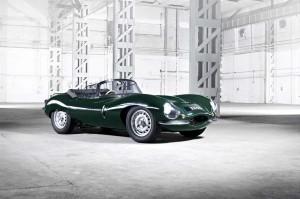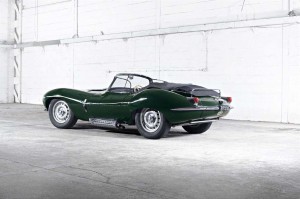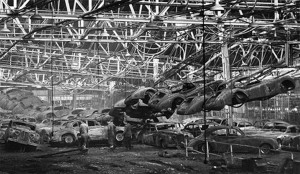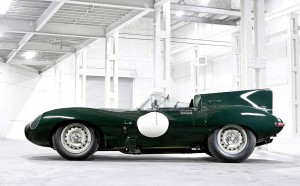When a fire struck the Jaguar plant in March 1957, it destroyed the last of a batch of D-Type race cars that were going to be converted to street vehicles, and nearly doomed the British maker in the process.
Nearly six decades later, Jaguar says it will build the nine XKSS models it was never able to produce, selling them for a “severe” 1 million British pounds, or about $1.4 million at the current exchange rate.
“We will now build the nine XKSS cars that never saw the light of day,” said Tim Hannig, director of Jaguar Land Rover Classic, the unit that primarily focuses on providing parts and restoring old vehicles for their owners.
(Jaguar smashes through the 200 mpg barrier with new F-Type SVR. Click Here for a look.)
Few cars have a more historic pedigree. In the early to mid-1950s, Jaguar was a fearsome force on the endurance racing circuit. In 1956, it set a never-to-be-matched record, its D-Type racers capturing the first six spots at the 24 Hours of Le Mans.
The maker decided to retire the D-Type, with its distinctive, slightly offset vertical tail, but it decided to transform 25 remaining cars into street-legal vehicles at its Browns Lane assembly plant. It had completed work on 16 when fire hit, destroying everything in the factory, including the tooling for what had been renamed the XKSS. Nine of those vehicles – the world’s first supercar, contends Hannig – were never finished.
(Jaguar Land Rover not ready for battery power yet. Click Here for the story.)
Fast forward to 2016 and Jaguar hasn’t somehow managed to massage scorched and mangled sheet metal back into shape. The nine sports cars it plans to build will be ground-up replicas, but the maker isn’t taking any liberties. It intends to stick precisely to the original blueprints.
“These are brand new cars,” but they will match the “exact specifications” of the originals, Hannig explained, adding “We’re having some debate. For example, it didn’t come with a fuel gauge. Should we put one in?”
Owners will have the opportunity to order a few of the accessories offered by Jaguar in 1957, including a luggage rack, however.
Even before the official announcement at the New York Auto Show, buyers have already shown up to speak for five of the Jaguar XKSS models. All 16 of the originals went to owners in the U.S., as will two of the new ones. Two others were sold to buyers in the U.K., another going to New Zealand. Four others are still available, Hannig said.
(Popstars Jonas, Lovato lend Honda a hand in NY. Click Here to see how.)
For all that money, the sports cars will not be street legal in most countries, notably including the U.S., though Hannig pointed out that many rich performance car owners these days have access to the numerous club tracks popping up across the country where they could exercise those vehicles.
As for the $1.4 million price tag, the Jaguar executive said the XKSS project really won’t be “a very beautiful business,” because of the high cost of re-engineering and building the vehicles, largely by hand.
The original Jaguar D-Type, and the XKSS models that followed, used an unusual construction method lifted from the post-War aircraft industry and Jaguar has had to “build our own capability” to produce that design all over again. Like the XKSS itself, it is rising from the long-cold ashes of the Browns Lane fire.




